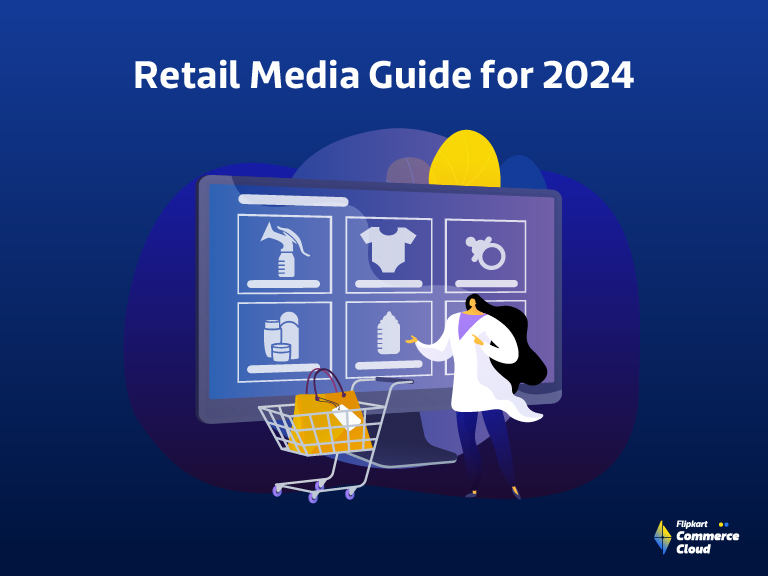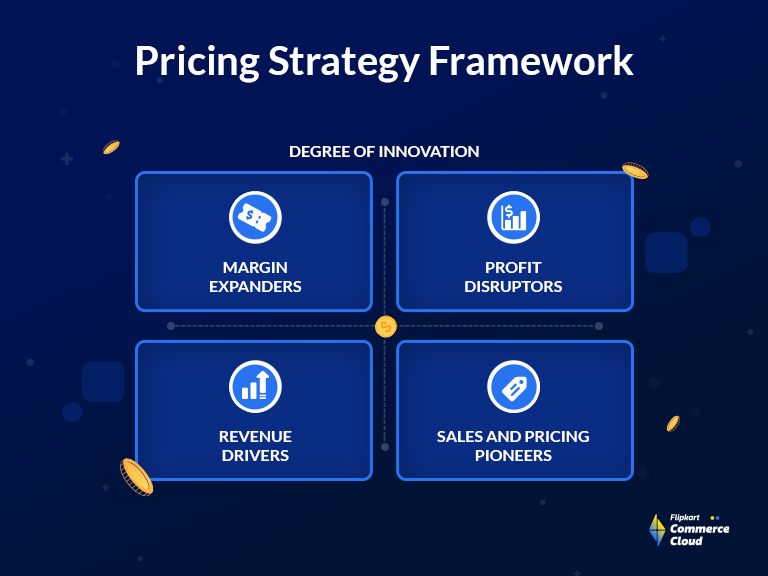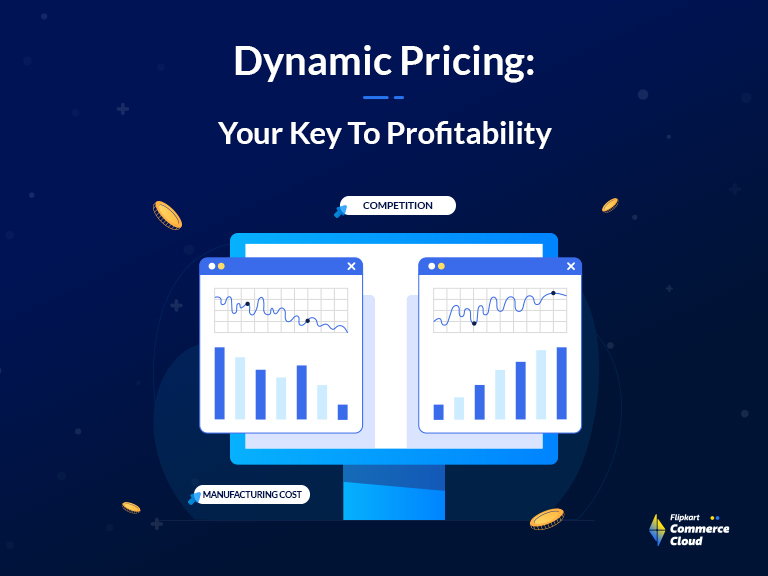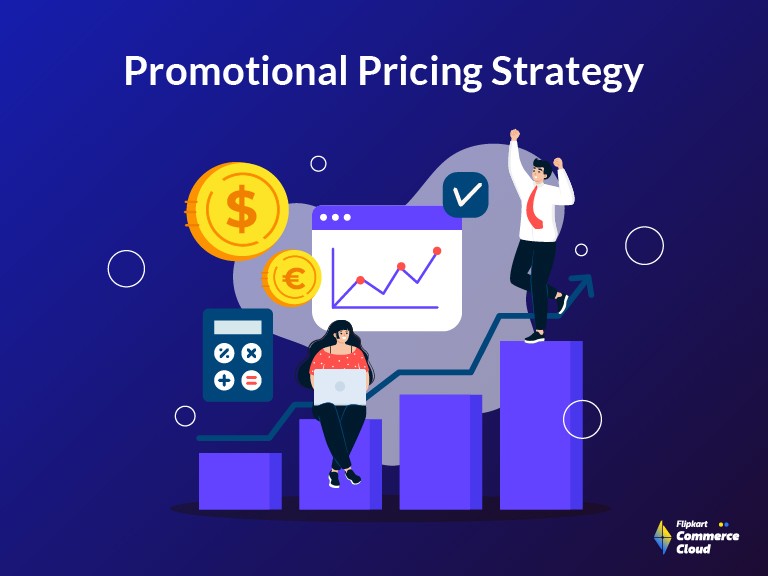With a steady rise in the popularity of online shopping, the retail media industry has become an integral part of digital advertising campaigns for brands. As per a study by Statista, global retail media ad spending is projected to reach $175.6 billion by 2028. This impressive growth indicates that retail media advertising is not just a trend; it is now a crucial component in the marketing strategies of retailers and brands.
Retail media is changing the way marketers connect with consumers, offering a unique blend of precision targeting and personalized engagement right at the point of purchase. It empowers retailers like you to optimize your ad inventory and enjoy diverse revenue streams by offering advertisers access to active customers on your platform.
In this blog, we will cover everything you need to know about retail media advertising, starting with its meaning, importance, and benefits for both retailers and brands.
What is Retail Media?
Retail media is a modern advertising strategy enabling sellers to advertise their products and services directly on a retailer’s website or app. These advertisements are precisely targeted, leveraging consumer behavior data to display items that align with shoppers’ interests.
Earlier, when retail marketplaces were mainly considered to be shopping destinations, advertisers used to purchase advertising space from content providers like YouTube, Facebook, LinkedIn or Google. However, this methodology has transformed in the last few years.
You can now leverage the advertising technology earlier used by publishers directly into your retail marketplace. This approach can create new opportunities for you to increase advertising revenue while improving the experience of your customers.
With this type of advertising, brands can strategically place native and display ads across your marketplace. This includes sponsored, video and banner ads to target customers at different touchpoints in their shopping journey.
These advertisements can be featured on the home page, category pages, product pages, and social media handles.
Why is Retail Media Advertising Important?
Retail media advertising is a form of online advertising where highly targeted ads from brands are displayed on your marketplace. By leveraging data from your platform, marketers ensure that retail media advertisements are relevant to the consumer’s shopping behavior and preferences. But what makes it so important?
Firstly, retail media advertising is a useful tool for driving sales in your marketplace. It allows your vendors and sellers to reach consumers when they are already in a buying mindset. Secondly, this methodology enhances the visibility of products or services on your platform, helping boost brand recognition and recall.
Lastly, retail media advertising offers precision targeting opportunities for brands. Based on accurate data from your platform, these ads are customized as per the consumer’s shopping behavior and preferences, ensuring that the message reaches the relevant audience.
What Retail Media Ads Look Like and Where Do They Appear?
Retail media ads come in various formats, each designed to capture the attention of shoppers and guide them toward making a purchase. The key is that these ads are seamlessly integrated into the shopping experience, appearing natural and non-intrusive.
- Sponsored Product Listings: These are product ads that appear at the top of search results. They are designed to capture the attention of shoppers who are actively searching for a particular product.
- Banner Ads: These ads are typically placed on the home page and are aimed at consumers who are just beginning their shopping journey. They offer a great way to showcase a range of products or highlight special offers.
- Video Ads: These are highly engaging ads that can be placed on product pages to provide more detailed information about a product. They can significantly enhance the shopping experience and drive conversions.
- Off-Site Ads: These ads leverage retailer data but are served through partnerships. These ads are displayed on third-party websites, apps, audio, digital video, and in-game advertisements.
The placement of these ads is strategic and designed to touch customers at various stages of their shopping journey. They can appear on various platforms, not just on your marketplace but also on other digital channels that your consumers frequent, including social media platforms, email newsletters, and even other retailer websites.
What are Retail Media Networks?
Retail Media Networks (RMNs) are platforms that connect brands with retailers for advertising purposes. These networks provide a centralized hub where brands can access a wide range of advertising opportunities across multiple retail channels. By leveraging RMNs, brands can reach a vast audience of engaged shoppers and leverage the power of first-party data to deliver highly targeted and personalized ads.
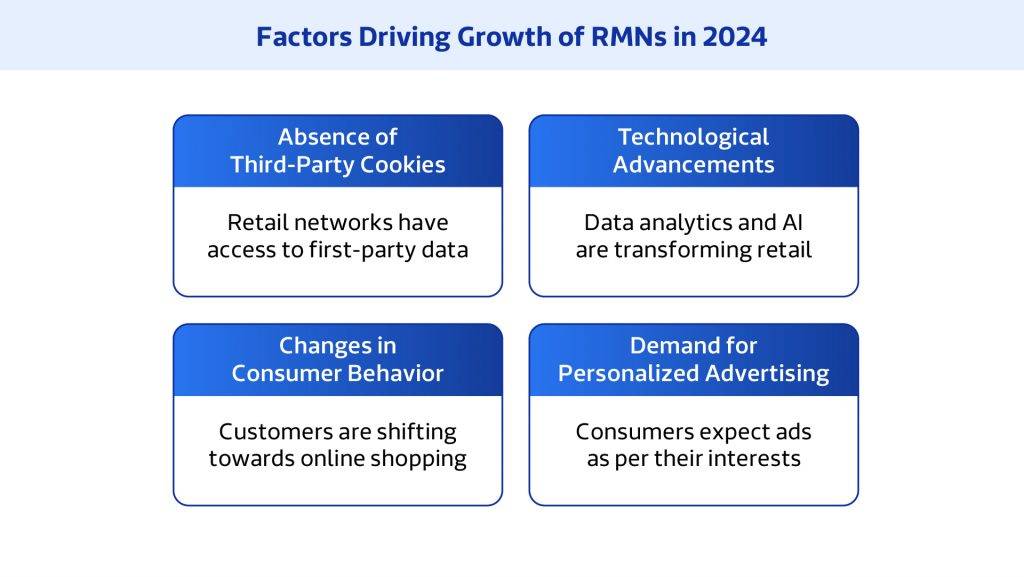
What's Driving the Growth of Retail Media Networks in 2025?
Several factors are contributing to the growth of retail media networks in 2025:
- Absence of Third-Party Cookies: With the phasing out of third-party cookies, retail media networks are gaining prominence. Unlike other platforms, retail networks have access to first-party data, which remains unaffected by this change. This allows for accurate targeting and personalization of ads.
- Technological Advancements: The rise of advanced data analytics and AI has transformed retail advertising. These technologies enable you, as a retailer, to offer more targeted and personalized advertising solutions to brands, leading to increased effectiveness and ROI.
- Changes in Consumer Behavior: The move toward e-commerce, especially through mobile devices, has created new opportunities for digital advertising. RMNs enable you to reach consumers wherever they are, enhancing their shopping experience and driving sales.
- Demand for Personalized Advertising: Today’s consumers expect ads to be relevant to their interests and preferences. RMNs allow brands to deliver highly targeted and personalized ads, resulting in better engagement and results.
Example of Retail Media Network
Target’s retail media network, Roundel, offers a comprehensive suite of solutions for brands and retailers through its 500+ strong global team. It provides a platform where brands can advertise their products directly on Target’s marketplace, reaching a vast audience of consumers.
Roundel uses Target’s rich insights to create personalized advertising campaigns that show the customers more of the products and offers they love. It supports various ad formats, providing a one-stop solution across all types of devices. This allows brands to create engaging and interactive ads that enhance the shopping experience for its 165 million visitors.
Roundel works on Target’s platforms, like Target.com and their mobile app, as well as going beyond to connect partners with visitors across more than 150 premium publishers and channels. They work with some of the largest brands and advertising agencies globally to create unique experiences for their visitor’s digital journey.
As a retailer, adopting a similar approach and building a retail media platform could be your key to unlocking unprecedented growth in 2025 and beyond.
Additional Read: How Functional Retail Media Platforms Are Built Different From Agency Ad Tools
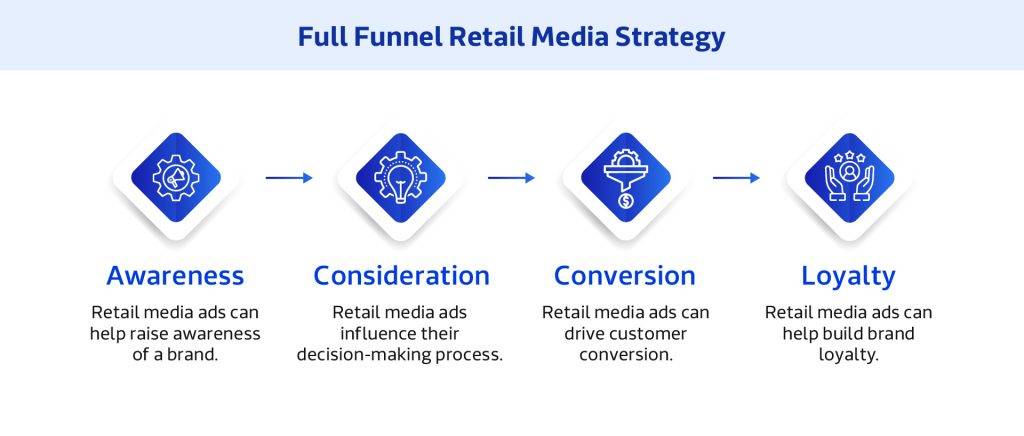
Full Funnel Retail Media Strategy
While you are building your own RMN, it is essential to focus on building a full-funnel retail media strategy. This strategy would allow you to create a seamless and engaging shopping experience.
A full-funnel retail media strategy involves using retail media advertising at each stage of the buyer journey, starting from awareness and consideration to conversion and loyalty. It’s about reaching consumers with the right message at the right time, guiding them through their buying journey and ultimately leading them to make a purchase.
Here is how this strategy works:
- Awareness: At the top of the funnel, retail media ads can help raise awareness of a brand or product. These ads can be placed on your home page or in search results, reaching consumers who are just beginning their shopping journey.
- Consideration: As consumers move down the funnel, retail media ads can help influence their decision-making process. These ads can provide detailed information about a product, helping consumers compare different options and make an informed choice.
- Conversion: At the bottom of the funnel, retail media ads can drive conversions. These advertisements can feature on product detail pages, offering a final push to consumers who are ready to make a purchase.
- Loyalty: After a purchase, retail media ads can help build brand loyalty. These ads can offer personalized recommendations or special offers, encouraging consumers to continue shopping with the brand.
Benefits for Retailers
As a retailer, embracing retail media advertising can unlock the following benefits for your online store:
- Increased Revenue: By offering advertising space on your platform, you open up a new revenue stream. Brands pay to place their ads, contributing to your bottom line. This ad revenue can be useful in reducing your dependence on traditional sales channels.
- Enhanced Customer Engagement: Retail media ads are designed to be engaging and interactive. By including interactive elements like quizzes or games, you can boost customer engagement and encourage repeat visits.
- Improved Customer Loyalty: Personalized ads and promotions not only drive sales but also foster a stronger connection between your customers and the brands they love. This strengthens customer loyalty, encouraging repeat purchases.
Benefits for Brands
For brands, retail media advertising offers the following advantages that traditional advertising channels may not provide:
- Improved Targeting: Retail advertising media enables brands to target their advertisements based on specific audience characteristics, such as shopping behavior and demographics. This precise targeting boosts the chances of reaching consumers who are more likely to convert.
- Better ROI: Retail media ads often yield a higher return on investment compared to traditional advertising channels. They reach the audience at the point of purchase, which can be helpful in improving conversion rates.
- Increased Brand Visibility: Advertising on retail media platforms puts brands in front of a large audience of online shoppers. This increased visibility can boost brand awareness, making it simpler for customers to recall and choose these brands when making a purchase.
Implementing Your Retail Media Network (RMN) with Flipkart Commerce Cloud
As a retailer, you are always looking for ways to enhance your digital presence, drive sales, and boost your platform’s revenue generation capabilities. To achieve these goals, you need a reliable partner who can help you implement and manage a robust Retail Media Network (RMN). This is where Flipkart Commerce Cloud (FCC) comes into the picture.
FCC offers enterprise digital commerce solutions for retailers and e-commerce businesses. It is built with Flipkart’s extensive knowledge of the e-commerce market, voluminous data from e-commerce events, and scale tested on billions of transactions.
Partnering with Flipkart Commerce Cloud for retail media advertising offers you several benefits:
- Manage Retail Ads with Ease: Flipkart Commerce Cloud’s Ads Manager helps you manage display ads, sponsored listings, contextual ads, and end-to-end retail ad ecosystems with minimal effort.
- Access to a Large Audience: With FCC, you can reach a vast customer base, enhancing the visibility of your vendors’ products and driving sales.
- Advanced Targeting Capabilities: Our ad platform leverages advanced data analytics and ML to offer targeted and personalized advertising solutions. This ensures that your vendors’ ads reach their target audience.
- Comprehensive Analytics: We also provide interactive dashboards for reporting, helping brands make strategic campaign decisions. This allows you to track the performance of your vendors’ ads and optimize your retail media strategy.
That’s not all. We understand that every business has its own nuances and requires customized solutions. That’s why our world-class consultants work closely with stakeholders to offer the solutions they need.
From the initial stages of understanding your requirements to the ongoing process of optimizing your retail media strategy, team FCC is here to help. We bring our 15+ years of extensive knowledge of the e-commerce market, data analytics, and advanced machine learning to help you make informed decisions that drive growth.
Get in touch with the experts at FCC to learn more about how we can help you.
